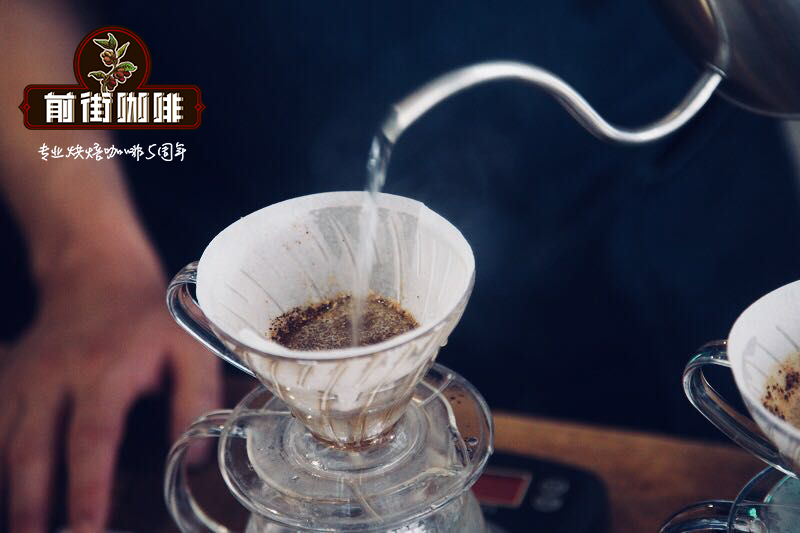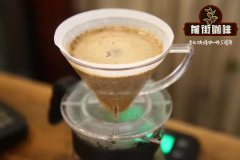Taste characteristics of Yejashefi biloya Coffee correctly drinking Faye Xuefei biloya Coffee

Professional coffee knowledge exchange more coffee bean information please follow the coffee workshop (Wechat official account cafe_style)
The Biloya washing station was built in 2001 and processes nearly 1 million kilograms of coffee fruits from 211 small farmers each year. There are 138 raised drying beds on 2.5 hectares of land. When ripe cherries arrive, they are sorted by hand to separate less dense cherries.
The coffee sent to the Biloya water washing station grows at an altitude of 1700-2000 meters. There are several floors of drying platforms on the slope below the water washing station, and workers at the Biloya washing station sort the cherries by hand as the coffee dries on the raised bed. The grid material allows air to flow above and below the coffee to prevent the formation of any mold or mold. It takes 18 to 21 days for cherries to dry. After the naturally processed coffee is ground, the dried cherry pulp and parchment are immediately removed, then stored in a warehouse 50 cm from the wall and 15 cm from the ground, and finally transported to the final processing warehouse in Addis Ababa, where color classification and packaging are carried out for shipment.
The Biloya washing station employs men and women, and 211 sharecroppers who transport cherries to the Biloya washing station grow coffee, common shade trees Bibira, Cordia Africana and self-sufficient Ensete osum on an average of 0.5-2 hectares of land. The Biloya washing station is named after the small town of Biloya, which is located in the Kochere district of the Grand Yega Sheffield Coffee area (greater Yirgacheffe coffee area).
Kurume is one of the Ethiopian coffee varieties from Yirgacheffe. Surveys conducted between 1989 and 1994 helped to determine the local land race. Before the 1970s, Ethiopia had little deliberate breeding or variety selection at the national level; individual farmers chose seeds locally to propagate their crops. However, a devastating epidemic of coffee berry disease in the 1960s led researchers to establish the Jimma Agricultural Research Center (JARC) and began cataloguing coffee trees, which proved that they were resistant to both coffee berry disease and drought and had high yields.
These selections are made as a national crop improvement project, but in the fields, newly selected and resistant varieties do not perform well in climatic conditions different from Jimma, and Jimma is the breeding ground for these crops. JARC researchers focused on the classification and selection of local land varieties that naturally adapt to the environment in which they have grown and represent the coffee flavor of many coffee-growing areas in Ethiopia.
Kurume is a regional variety found in Yirgacheffe area. Like varieties in many regions, the names of coffee varieties are borrowed from local trees. Kurume trees bear small fruits and have a good year, similar to the small cherries of Kurume coffee, with a bumper harvest. Kurume is a variety commonly cultivated by farmers in Gu Ka producing areas and Gdeo (including Yirgacheffe). Sometimes, the name Kurume is applied to the varieties selected by JARC because the trees look similar.
Dega is another local landowner named after local trees. The wood of Dega trees gives off a sweet aroma when used as firewood, similar to the smell of roasted coffee. The Amharic word "dega" means "cool upland area" and also applies to the agro-ecological conditions for the growth of dega coffee.
Wolisho is another coffee variety named after Gedeo and native trees in the surrounding area. The tree bears big fruit, but its annual yield is unstable. Wolisho coffee has big cherries and long leaves.
Coffee from Biloya is ready for export at Tracon Trading's 30, 000-square-meter coffee cleaning and storage plant in Addis Ababa. The factory is equipped with modern Ping Herris coffee processor and Buller Z+ color separator. This machine can process six tons per hour. All processing work is mechanical and electronic, including the final manual picking on the conveyor belt. The factory's six silos can hold about 15000 metric tons of coffee at a time. The warehouse is clean, with adequate lighting and ventilation, which is ideal for maintaining the quality of coffee.
END
Important Notice :
前街咖啡 FrontStreet Coffee has moved to new addredd:
FrontStreet Coffee Address: 315,Donghua East Road,GuangZhou
Tel:020 38364473
- Prev

Introduction to the coffee flavor of Yega Sheffielia water washing station
For more information about coffee beans, please follow the Coffee Workshop (official Wechat account cafe_style) about the Biloya washing station. The smallest administrative division in Ethiopia is kebele, which is home to at least 500 families. Biloya is one such kebele, which belongs to the Cochel district, a few miles south of its famous Yegashifi producing area. Biloy
- Next

Arabica is better or Manning is better. Where is the coffee bean recommended?
Professional coffee knowledge exchange more coffee bean information please follow the coffee workshop (Wechat official account cafe_style) what is Sumatran coffee? Sumatran Coffee is located on Sondera Island, the largest island in Indonesia. On the so-called coffee bean belt. Some of the best quality coffee is produced here. They are different from other types of coffee in their earthy taste and thick knots.
Related
- Beginners will see the "Coffee pull flower" guide!
- What is the difference between ice blog purified milk and ordinary milk coffee?
- Why is the Philippines the largest producer of crops in Liberia?
- For coffee extraction, should the fine powder be retained?
- How does extracted espresso fill pressed powder? How much strength does it take to press the powder?
- How to make jasmine cold extract coffee? Is the jasmine + latte good?
- Will this little toy really make the coffee taste better? How does Lily Drip affect coffee extraction?
- Will the action of slapping the filter cup also affect coffee extraction?
- What's the difference between powder-to-water ratio and powder-to-liquid ratio?
- What is the Ethiopian local species? What does it have to do with Heirloom native species?

